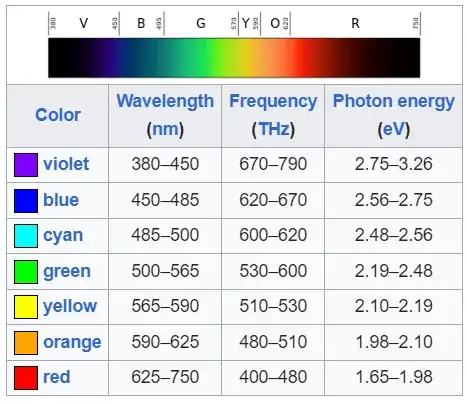TLDR: The perceived color of monochromatic light depends on the frequency of the light at the retina. The frequency of the light at the retina is equal to the frequency of light in a vacuum or in any other medium. The wavelength of light in the retina is not equal to its wavelength in other media. So it's more convenient to discuss in terms of frequency.
Very Important Fact: The frequency of light is preserved as it travels through different (linear) media. The wavelength is not. This means that, in situation where light is travelling through different media (air, water, lenses, corneas, fluid in the vitreous body in the eye), the frequency is the same throughout, but the wavelength is changing.
- Why the colour of light depends on the frequency only and not on the wavelength?
See my answer to 2.
- Are we biologically designed to perceive only frequency and not wavelength? If yes, then why is that?
Yes, our eyes detect color based on the light that hits the photoreceptors (rods and cones) in the retina of our eyes. The light can be characterized by either its frequency or its wavelength in the eye. BUT because of the important fact above, it is more convenient to specify the light in terms of its frequency rather than its wavelength. This way if we measure the frequency of light outside of the eye we know what frequency it will be inside the eye and thus what color will be perceived. If we measured wavelength we would have to do conversions to figure out what the wavelength would be in the eye.
- Why are then colours not defined only on the basis of frequencies? Why are they defined on the basis of wavelengths when wavelength doesn't even matter on the change of media?
Color can be defined either in terms of wavelengths or frequencies. In vacuum the relationship between wavelength and frequency is unambiguous, it is the speed of light $c$. Here is a chart showing different colors and their corresponding frequency, wavelength (in vacuum) and energy:
 If you see a color specified in terms of wavelength then you should understand that that is probably the wavelength in vacuum and can be converted to a frequency using $c$.
If you see a color specified in terms of wavelength then you should understand that that is probably the wavelength in vacuum and can be converted to a frequency using $c$.
